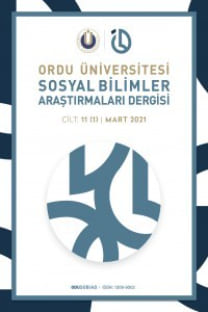THE DEMAND FOR MORE/PRIVILEGED (THINGS): Leisured Women, Consumption Practices, and Gated Community
The great body of people struggles for identity construction through the things and practices to live up to a lifestyle. Living in the gated community means bordering the lives from the city life. By means of privileged houses, a gated community functions for the terms as privilege, prestige, safety and hygiene. This study questions consumption practices of women of a gated community in Izmir. While the informants having different education levels, they spend their leisure times in a similar scheme of life. They behave as social club members. They alter their personalities through their possessions, commodities and daily life objects that consumed in terms of design, fashion, style, and brand articulations. This paper analyzes consumption practices as leisure time activities and discuss material relations as the values of commodities in this socio-spatial context. Their happiness, the issue of ‘demand for more’ and satisfaction levels in relation with this living concept are emphasized
Anahtar Kelimeler:
Consumption Culture, Leisured Women, Consumption Practices, The Values of Commodities, Gated Community
THE DEMAND FOR MORE/PRIVILEGED (THINGS): Leisured Women, Consumption Practices, and Gated Community
The great body of people struggles for identity construction through the things and practices to live up to a lifestyle. Living in the gated community means bordering the lives from the city life. By means of privileged houses, a gated community functions for the terms as privilege, prestige, safety and hygiene. This study questions consumption practices of women of a gated community in Izmir. While the informants having different education levels, they spend their leisure times in a similar scheme of life. They behave as social club members. They alter their personalities through their possessions, commodities and daily life objects that consumed in terms of design, fashion, style, and brand articulations. This paper analyzes consumption practices as leisure time activities and discuss material relations as the values of commodities in this socio-spatial context. Their happiness, the issue of ‘demand for more’ and satisfaction levels in relation with this living concept are emphasized
Keywords:
Consumption Culture, Leisured Women, Consumption Practices, The Values of Commodities, Gated Community,
- ISSN: 1309-9302
- Yayın Aralığı: Yılda 3 Sayı
- Başlangıç: 2010
- Yayıncı: -
Sayıdaki Diğer Makaleler
“VÜCUDUMUZDA SİSTEMLER” ÜNİTESİNE YÖNELİK ÜÇ AŞAMALI KAVRAM TANI TESTİ GELİŞTİRİLMESİ
Bayram Oğuz AYDIN, Emine ŞAHİN
TURİZMDE DESTİNASYON MARKA İMAJI VE DESTİNASYON AİDİYETİ: GAZİANTEP İLİ ÜZERİNE BİR ALAN ARAŞTIRMASI
İbrahim GİRİTLİOĞLU, Emine Nurdan ÖKSÜZ
ANGOLA İÇ SAVAŞININ ANA AKTÖRLERİ VE ULUSLARARASI RAMİFİKASYONLARI
ANTİK ÇAĞ CAM YAPIM TEKNİKLERİNİN 3D MODELLEME ÇALIŞMASI İLE YENİDEN ELE ALINMASI
GALATİA KRALLIK (TOLİSTOBOGLAR ) DÖNEMİ PESSİNUS DARPLI SİKKELERİ
“KURUŞ ARTIRIM” SİTELERİ: AÇIK ARTIRMA MI? SANS OYUNU MU? YOKSA DOLANDIRICILIK MI?
FİLM ÇEVİRİSİNDE FONETİK EŞLEME
BANKACI KADINLARIN ÖRGÜTSEL SİNİZMİN ALGILARININ İŞTEN AYRILMA NİYETİNE ETKİSİ: ORDU İLİ ÖRNEĞİ
